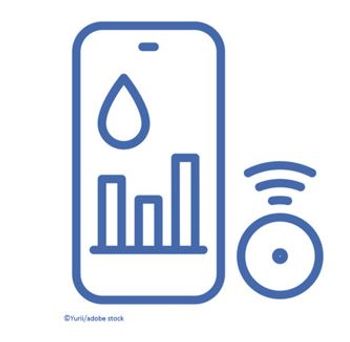
Study: Pillbox Gadgets Do Nothing to Improve Rx Adherence
The devices may be simple and intuitive, but it may take more than a gadget to build optimal medication adherence.
Multifaceted problem likely needs additional support mechanisms
Three low-cost gadgets didn't help patients stick to their medication schedules, a large study showed.
When patients were randomized to receive a pill bottle strip with toggles, a digital timer cap, a standard pillbox, or a control of no device at all,
In the study published online in
"These three devices are simple by design, intended to be intuitive to use, and minimally disruptive," the researchers wrote. "However, for patients without established routines around medication taking, the additional cues from these devices may not be sufficient to overcome forgetfulness. Moreover, the devices may not have promoted periodic medication refilling, which is necessary for long-term adherence. For these devices to work, they may need to be administered with additional support mechanisms."
Writing in an
"Despite confirmation of their importance across 40 years of research, multi-component patient-oriented adherence interventions are not yet routine parts of the U.S. healthcare system. The integration of behavioral resources to support
The trial included 53,480 U.S. enrollees of CVS Caremark, a pharmacy benefit manager, all of whom had a medication possession rate of 30-80% in the year before randomization. Participants (average age of 45, 56% women) were randomized and compared with peers with similar types and targeted dosing frequencies of their medications.
Patients in the intervention groups received the Take-n-Slide pill bottle, the Rx Timercap, or the common plastic daily pillbox. The participants' prescription data were collected from 2013 to 2015.
Why nothing worked>>
Choudhry and colleagues said that they examined possible explanations for why none of the gadgets worked: "First, we selected for inclusion those patients who had suboptimal adherence and then we anticipated that, during our yearlong follow-up, 2% of our controls would become optimally adherent. In contrast, we observed that 12% to 18% of controls actually became optimally adherent without specific intervention. This finding is consistent with recent observations that adherence, like other health behaviors, is dynamic, with a sizable proportion of previously nonadherent patients demonstrating
"As such, it may have been preferable to instead target patients who were predicted to be nonadherent in the future (by using recently described methods, for example) rather than target those who were nonadherent at the point of randomization."
In addition, the researchers noted that those surveyed frequently reported difficulties with putting on and taking off the digital timer cap device. "The fact that the standard pillbox, ubiquitous in pharmacies, and other care settings resulted in marginally greater improvements in adherence than the other two devices may suggest that familiarity and comfort with a device could have facilitated uptake and the resultant behavior change."
Prescription filling records were a surrogate for actual use, and the authors acknowledged the possibility of misclassification throughout their dataset.
Kronish and Moise maintained in their editorial that "there is unlikely to be a 'magic pill' that will solve medication nonadherence.
"Advances in mobile health and telemonitoring show promise for facilitating behavioral interventions and allowing physicians to tailor these interventions to a patient's individual barriers," the editorial noted, although it remains to be seen how useful they will be.
"Routinely inquiring about medication adherence in a non-judgmental manner remains essential to uncovering nonadherence when objective measures are unavailable. When nonadherence is suspected, clinicians are encouraged to explore the reasons for
The study was supported by a grant to Brigham and Women's Hospital from CVS Health.
Several of the co-authors reported employment with CVS Health.
Choudhry, Kronish, and Moise disclosed having no relevant conflicts of interest.
Reviewed by
last updated 03.02.2017
Primary Source: JAMA Internal Medicine
Secondary Source: JAMA Internal Medicine
This article was first published on
Newsletter
Enhance your clinical practice with the Patient Care newsletter, offering the latest evidence-based guidelines, diagnostic insights, and treatment strategies for primary care physicians.



















































































































































































































































































